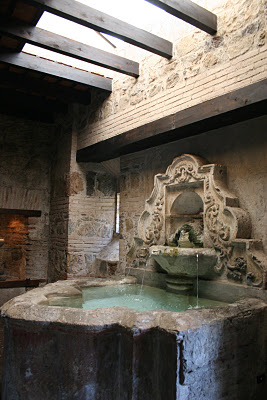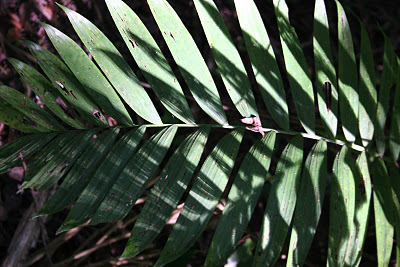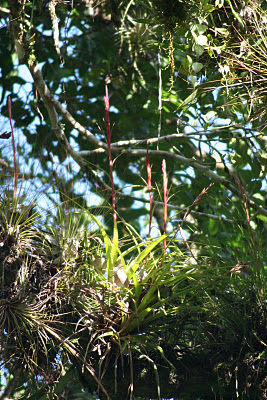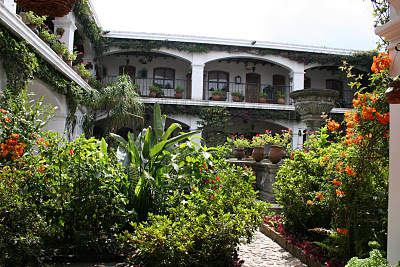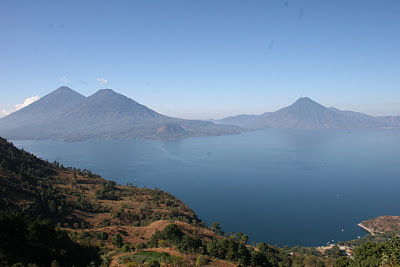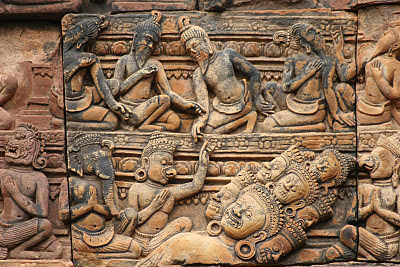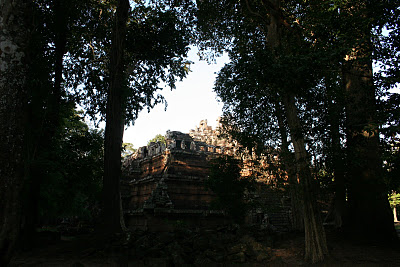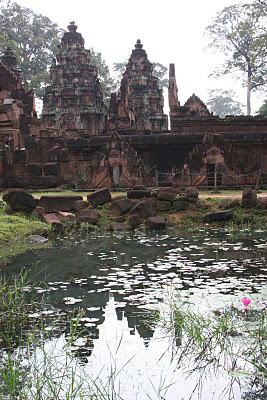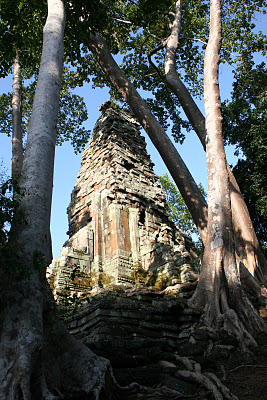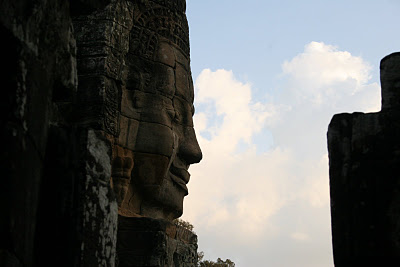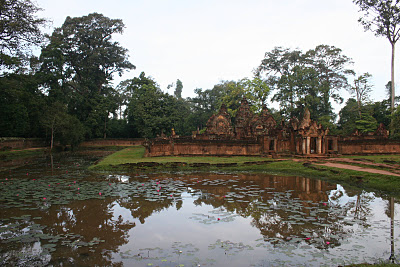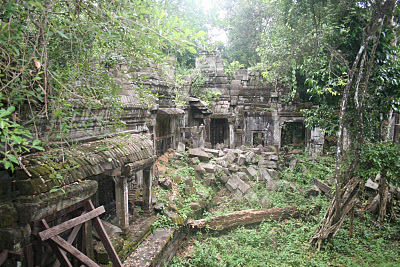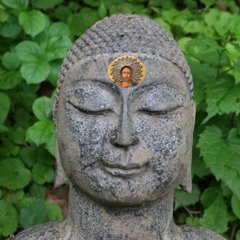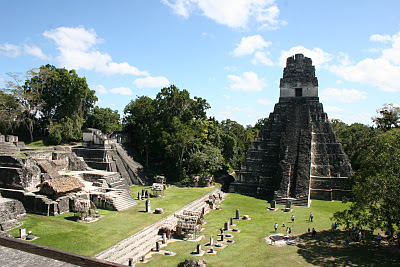
I have been alternating my morning readings between Dogen's
Shobogenzo
and Paul's letters. These might seem to have little to do with each
other, coming as they do from alternate traditions on opposite sides of
the world. Yet, as I read, I am oddly struck by the tone and the
sincerity of both authors as they speak of a spiritual search that
begins within the depths of man and cannot be conducted in any other
place or any other manner.
Both men emphasize over and over
again: practice, practice, practice. They both emphasize what an
extraordinary and amazing gift this thing we call life is, and how vital
our inner approach to it needs to be. They both speak from their own
direct experience about the possibility of a transformation so profound
that nothing in the world can ever seen the same after it is understood.
It's
odd to me that so many academics and scientists so readily dismiss the
religious question. Despite the overwhelming evidence of thousands of
years of experience and discussion on these matters, the reductionist
faction in society insists that it is all imaginary. Subjective. If it
cannot be analyzed, apparently, it doesn't exist. They would actually
have us believe that the generations of great spiritual masters are
making everything up. Their response to geniuses like Meister Eckhart
and Dogen is encapsulated in snotty little books and sound bites that
today's overstimulated, mindless media is anxious to exploit.
Maybe
the reason these little men shout so loud is because they are in such a
tiny minority. It's sad for them, really: they're up against billions
upon billions of living people who believe in the religious experience,
and approximately 10,000 years or so of human history that is largely
built on this question.
What makes matters even more frustrating
for them is that they think that they know everything and have
everything figured out. I am often like that myself, so I can well
understand their frustration and their need to attack everything they
don't feel represents a valid point of view. If it were not for the
terrifying shock of my own religious experience, which radically
transformed everything I thought I knew and everything I believed in, I
might even be on their side.
When the intellect acts alone, it
acts from desperation. Most of our modern culture is built on the
intellect acting alone. A very close friend of mine from my group once
said that Dr. Welch told him that today's world was a picture of
intellectual center run amok. Couldn't agree with him more.
OK,
now we come to the Maya. Here is a third force -- from a completely
different part of the world than Paul's Roman Empire, and Dogen's
Imperial China and feudal Japan.
The Mayan culture grew up, so
far as we can tell, completely independent of influences from the old
world. Their art looks very different than old world art. Their myths
appear to be very different than old world myths. Yet they managed to
develop an elaborate religious culture that in many ways emulates the
religious elaborations we find in the old world.
We know very
little about this religion, but we do know that it was a major force in
their society. On the trip, it repeatedly occurred to me that
understanding the Maya hinges on understanding their religion. Just
looking at architecture and histories of who killed who will not give us
any real insight into what went on back then.
The lack of
written texts suggests that we may never understand their religious
practices in any detail, but we can make some pretty reasonable
assumptions.
The first assumption is that they were a lot like we
are today. This is true of most ancient cultures. Believing that
distance in time, or distance in geography, produces human beings and
cultures that are completely different than one another is false.
Viewed from a strictly Darwinian point of view, we must argue that
cultures, traditions, and societies all spring from the same basic
biological roots. Because they are a product of natural selection as
much as anything else, they will tend to resemble each other anywhere,
and will always fulfill the same functions.
This means that we can look for similarities between completely unrelated societies and cultures with some degree of confidence.
The
second assumption is that their religion had an esoteric tradition.
All religions do. Like Paul, and like Dogen, they had a powerful
interest in the nature of the inner man. Maybe not all their rulers
did; maybe not all their people did. There was, however, a priesthood
deeply interested in the varieties of religious experience. And there
is one excellent piece of evidence directly at hand to support this
contention.
We know that the Maya ingested hallucinogenic on a
regular basis; this was a practice all across Mexico, Central, and South
America, and still is today. Anyone who has taken LSD can tell you that
practices of this nature will have a profound effect on one's
perception of reality.
There can be little doubt that their
ingestion of peyote, hallucinogenic mushrooms, and other psychoactive
compounds informed their view of the inner man, raising questions that
our own counterculture raised in the 1960s. Because their own work in
this area was done over centuries, under the supervision of shamans who
had extensive experience, they probably achieved more profound
understandings than students on a college campus can.
I came
across intimations of this when I was in Guatemala. As an artist and
longtime student of symbolism, I tend to look at artworks in a slightly
different manner than archaeologists, professors, and your average
tourist will.
What repeatedly struck me about the art of the Maya
was that they often appear to depict inner structures such as flowers
and Chakras, much in the same way that we see them in Hindu, Buddhist,
and Babylonian and Egyptian art.
From my own point of view, the
location
of the symbols leaves little doubt that the esoteric students in the
Americas became familiar with the inner structure of man in the same way
that the old world religions did, and that they did so independent of
influence from the old world.
That in itself provides some weight
to the scientific argument for the existence of these things, because
when two societies that are
completely separated
and have cannot have influenced each other arrive at the same general
conclusions about these matters, it indicates that there is an objective
basis to the questions.
The questions run deep. While I was on
my trip, I saw a few pieces of art that bore such striking resemblances
to Asian art and mythology that one would be tempted to argue there were
direct influences. I feel reasonably certain there were not, which
suggests to me that the Maya were well acquainted with the ideas of
chakras, and the various forces that can lead to the inner
transformation of man. The fact that they, like all other societies,
objectified these questions in an outward manner and turned them into a
form of literalism is just one more point of contact that verifies they
were much like the rest of us.
In other words, when we encounter
these ancient cultures, those of us conducting an inner search can
perhaps begin to sense a kinship with them that transcends the mysteries
left by the erosive force of time.
These were, after all and above all,
human beings; and it is only in the exploration of our humanity itself that we can discover what we are.
May your roots find water, and your leaves know sun.
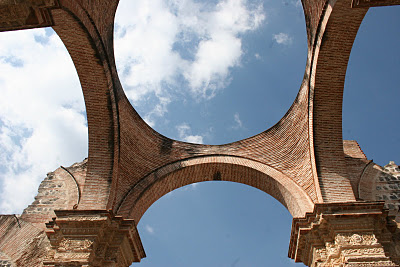 After
a movements class last night designed specifically to humble anyone who
thought they knew anything about how to "do" Gurdjieff's movements, I
came home lathered in sweat, the echoes of dervish foot-stomping still
reverberating through my being.
After
a movements class last night designed specifically to humble anyone who
thought they knew anything about how to "do" Gurdjieff's movements, I
came home lathered in sweat, the echoes of dervish foot-stomping still
reverberating through my being.
